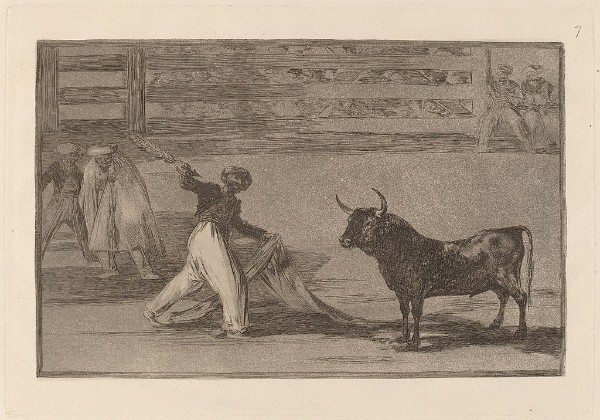The crowd gathers in the cobbled yard, children lifted to their shoulders. They are called to the puppet theatre by the showman with the bass drum on his back. On top of the theatre appear three characters: a man in an evening tuxedo, a policeman, and a fallen worker. The wealthy man holds a bag of money, a policeman holds a gun in his right hand and his nightstick in his left hand, and the worker, wearing a blue-striped shirt, has collapsed with his hands outstretched. The crowd whistles and smiles, babies laugh, and at the back of the crowd, a man in a cap and a blue shirt raises his fist. The crowd is ethnic, with red-heads predominating, there are also a couple of women with severely combed back dark hair, and the whistling man has black curly hair. Young and old are represented but the majority of the audience appears to be women, at home while their husbands are at work.
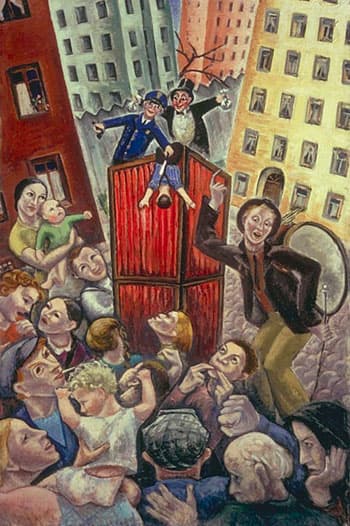
Paraskeva Clark: Petroushka, 1937 (National Gallery of Canada)
Even though the title of the piece is Petroushka, and we’re looking at a puppet play, that’s not the subject. The Canadian artist, Paraskeva Clark, painted it in an angry response to reports of Chicago police killing striking steelworkers in the summer of 1937.
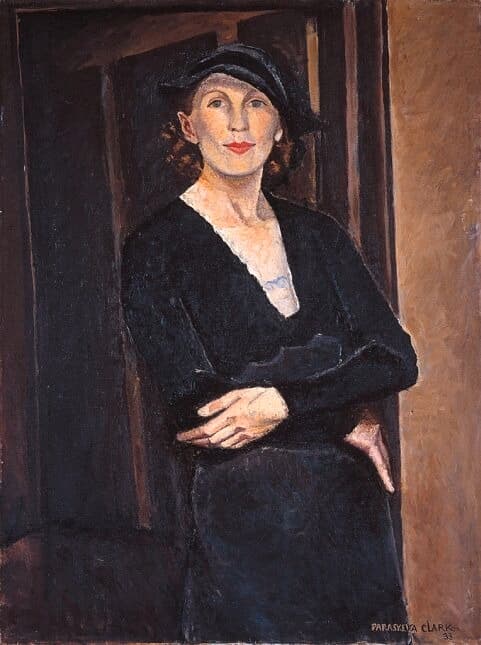
Paraskeva Clark: Myself, 1933 (National Gallery of Canada)
The 1937 Memorial Day Massacre, as it is known, took place during a steelworker’s strike when some 2,000 people at a Memorial Day rally were blocked by some 500 policemen from their march towards the factory of a steelmaker who wouldn’t sign the union contract. The conflict resulted in the police firing on the crowd, killing 4 people immediately; six others later died from their injuries. The confrontation was suppressed in the news and the use of guns was downplayed. A memorial to the 10 people killed can be found at 11731 South Avenue O and a sculpture memorializing the event is at 11659 South Avenue O in Chicago.
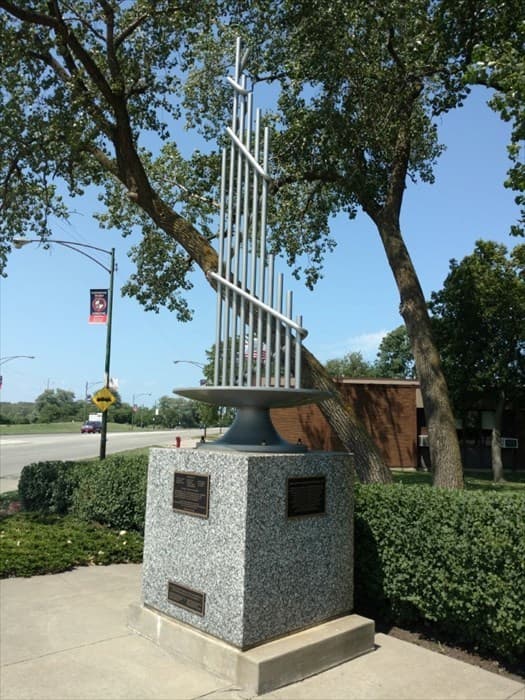
Republic Steel Memorial, Chicago
But why Petroushka? In music, we are familiar with the Petroushka puppet through Stravinsky’s ballet Petrushka (1911). Known as the ‘Peter puppet’, Petroushka evolved from a character of slapstick comedy to being a key figure in the Soviet Union who evolved in agitprop theatre to be a defender of poor peasants and attacking landowners.
In Stravinsky’s ballet, he’s not fighting the land-owning rich, or even the non-unionized steelworks, but he does die in a jealous attack by someone in power. In Stravinsky’s ballet, the three characters, Petrushka, the Ballerina, and the Moor, form the fatal triangle. The story places Petrushka and the Moor in opposition in their love for the Ballerina. Petrushka’s courtship is unsuccessful, and he loses the Ballerina to the more attractive/powerful/wealthy Moor. Something happens and Petrushka rushes from the theatre, only to be killed by the Moor with his sword. Power has killed Art. The Strong has killed the Weak.
In looking at André Benois’ stage designs for their room, Petrushka’s room is bare, decorated only on the walls, the black walls relieved with stars and 2 portraits, one of the devil. The moor’s room, on the other hand, shows a lush scene of palm trees and cactus. The bed is covered with a tiger’s skin, but the snake emblems everywhere, on the door and on the walls, might be an indication of his nature. The flies above the cactuses are a curious touch…
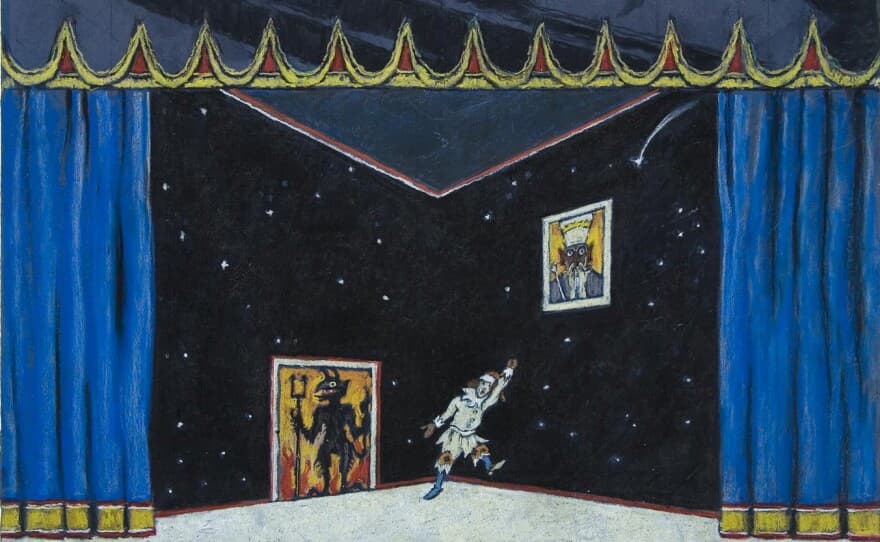
Benois: Petrushka’s Room
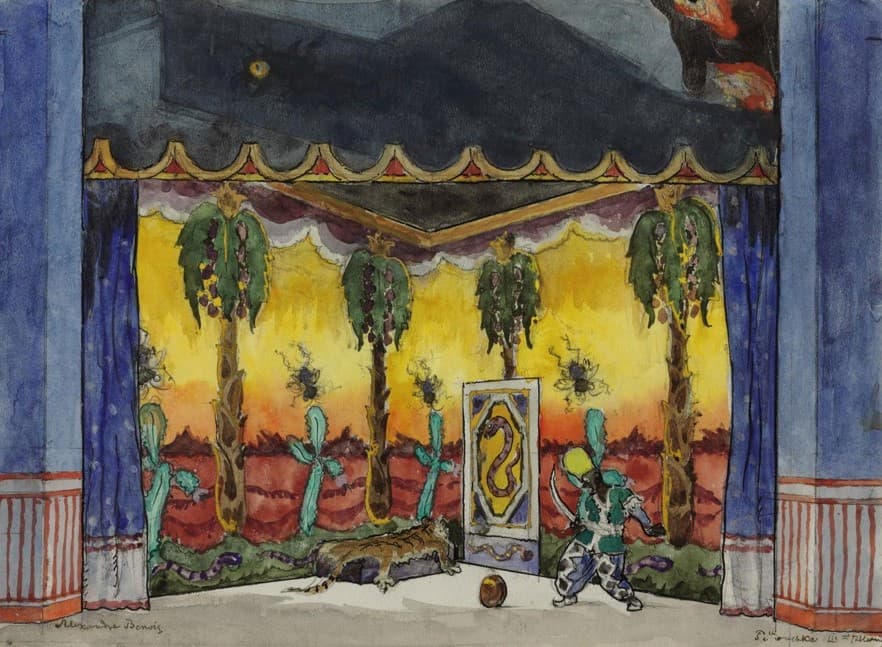
Benois: The Moor’s Room
In this final movement of the ballet, the scene opens on the Shrove-Tide Fair, that pre-Lenten time – the joyous business of the opening is interrupted by the Moor’s and Petrushka’s fatal encounter. The scene closes with the ghost of Petrushka taunting the Moor from the rooftops.
Igor Stravinsky: Petrushka – Tableau 4: The Shrove-Tide Fair (evening) (Seattle Symphony Orchestra; Gerard Schwarz, cond.)
Clark spoke out about the role and responsibility of the artist; she declared: ‘Those who give their lives, their knowledge and their time to social struggle have the right to expect great help from the artist. And I cannot imagine a more inspiring role than that which the artist is asked to play for the defense and advancement of civilization’. Music can be viewed the same way: civilization advances more through art than war.
For more of the best in classical music, sign up to our E-Newsletter


